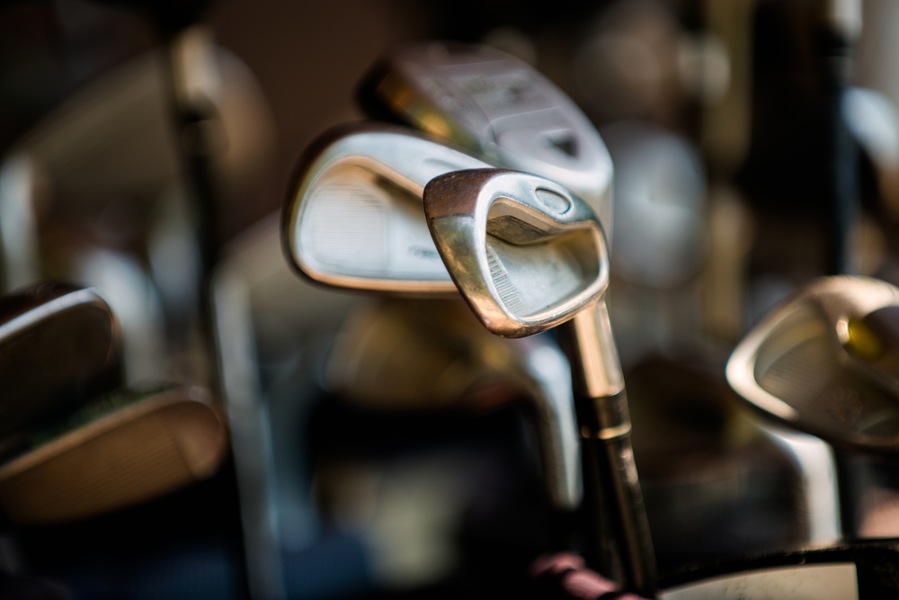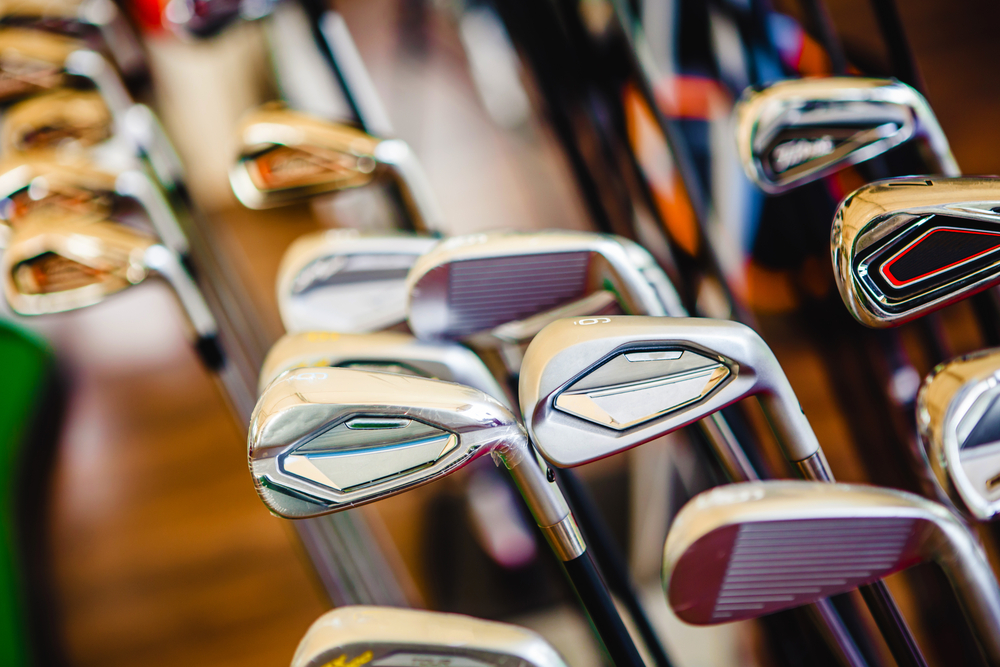As an Amazon Associate GolferHive.com earns from qualifying purchases.
How Long Do Golf Clubs Last? Lifespan, Tips, & Replacement Guide
Have you ever wondered about the lifespan of your trusty golf clubs? Whether you’re a weekend warrior or an avid golfer, understanding how long golf clubs last can save you money and improve your game.
Many golfers struggle with knowing when to replace their clubs, often keeping them too long and sacrificing performance, or replacing them too soon and wasting money. The uncertainty can lead to frustration and potentially impact your game.
Modern golf clubs typically last between 3-10 years with proper care and maintenance, though specific club types have different lifespans – wedges may need replacement every 1-2 years while putters can last decades.
As a professional golf equipment analyst with over a decade of experience testing and reviewing clubs, I’ve seen firsthand how club longevity affects performance. In this comprehensive guide, I’ll walk you through everything you need to know about golf club lifespan, from identifying wear and tear to maximizing your equipment’s durability. You’ll learn exactly when to replace each type of club and how to extend their life through proper maintenance.
Key Facts:
– Wedges typically need replacement every 12-18 months for frequent players
– Drivers and woods generally last 3-5 years with regular use
– Irons can last 8-12 years when properly maintained
– Putters have the longest lifespan, often lasting decades
– Frequency of play is the biggest factor in club wear and tear
What Factors Affect a Golf Club’s Lifespan?
Golf club longevity is primarily determined by usage frequency, maintenance habits, and storage conditions. These factors work together to either extend or reduce the functional life of your equipment.
How Does Frequency of Play Impact Club Longevity?
The number of rounds you play directly correlates with club wear. According to GolfSupport.com, avid golfers who play 3-4 times per week may need to replace their clubs twice as frequently as occasional players who golf monthly.

Example of club face wear pattern from frequent use – [Source: Plugged In Golf]
A typical scenario breaks down like this:
– Weekend Golfer (25-30 rounds/year): Replace clubs every 5-7 years
– Frequent Player (50-60 rounds/year): Replace clubs every 3-5 years
– Avid Golfer (100+ rounds/year): Replace clubs every 2-3 years
Key Takeaway: Track your rounds played annually to better predict when you’ll need replacement clubs. More frequent play accelerates wear and shortens club lifespan.
Which Club Types Wear Out the Fastest?
Different clubs in your bag age at varying rates due to their specific uses and materials. Today’s Golfer explains that wedges typically show the fastest wear due to their frequent use in sand and high-friction shots.
Here’s a breakdown of typical wear rates:
1. Wedges: 12-18 months
2. Drivers: 3-5 years
3. Irons: 5-10 years
4. Putters: 10+ years
What Role Does Storage and Maintenance Play?
Proper storage and regular maintenance can significantly extend club life. According to River Landing, clubs stored in climate-controlled environments and cleaned regularly can last several years longer than poorly maintained equipment.
Essential maintenance practices include:
– Cleaning clubs after each round
– Using head covers for woods and putters
– Storing clubs in a dry, temperature-controlled environment
– Regular grip replacement every 40-50 rounds
Learn more about proper club maintenance and cleaning techniques
Key Takeaway: Implementing a regular maintenance routine and proper storage habits can add years to your clubs’ useful life.
How Long Do Golf Clubs Last?
The average lifespan of golf clubs ranges from 3-10 years depending on the club type, usage frequency, and maintenance. Let’s dive deeper into the specific lifespans of different club types and what affects their longevity.
What’s the Average Lifespan of Different Club Types?
According to Stix Golf, here’s how long each type of club typically lasts with regular play:
| Club Type | Average Lifespan | Factors Affecting Durability |
|---|---|---|
| Wedges | 1-2 years | Groove wear, sand exposure |
| Drivers | 3-5 years | Face wear, shaft stress |
| Irons | 5-10 years | Face/groove wear, shaft integrity |
| Putters | 10+ years | Minimal wear, simple mechanics |

Different types of golf clubs and their varying lifespans – [Source: BigCommerce]
Are 10-Year-Old Golf Clubs Still Effective?
The effectiveness of older clubs depends largely on their condition and technological advances. Golf Digest reports that well-maintained irons can remain effective for 10+ years, though you might miss out on newer technology benefits.
Factors to consider with older clubs:
– Groove wear affecting spin control
– Materials fatigue impacting performance
– Technological improvements in newer models
– Changes in your playing style or ability
How Often Should You Replace Each Type of Club?
Replacement frequency varies based on usage and wear patterns. Here’s a detailed breakdown:
Wedges:
– High-frequency players: Every 12-18 months
– Average players: Every 2-3 years
– Consider regripping more frequently
Drivers:
– Competitive players: Every 2-3 years
– Recreational players: Every 4-5 years
– Earlier if there’s visible face damage
Irons:
– Regular players: Every 5-7 years
– Occasional players: Every 8-10 years
– Get fitted for optimal performance
Key Takeaway: Monitor your clubs’ performance and condition rather than strictly following a timeline. Replace them when you notice consistent performance decline or visible wear.
What Are the Signs Your Golf Clubs Need Replacing?
Golf clubs typically need replacement when showing visible wear patterns, performance inconsistencies, or after significant technological advances in the industry. Understanding these signs helps make informed replacement decisions.
How Can You Spot Physical Wear and Tear?
Look for these specific indicators of club wear:
- Groove Wear:
- Visible smoothing of groove edges
- Reduced spin on short shots
- Less control in wet conditions
- Face Damage:
- Scratches deeper than surface level
- Dents or cracks in the club face
- Unusual wear patterns

Example of wedge face wear patterns – [Source: GolfSupport]
- Shaft Issues:
- Visible bending or warping
- Loss of flex consistency
- Strange feeling during swing
Key Takeaway: Regular inspection of your clubs can help identify wear before it significantly impacts your game.
When Do Performance Issues Signal It’s Time for New Clubs?
Performance decline in golf clubs typically manifests through inconsistent shot patterns, distance loss, or reduced control. According to Golf.com, these are key indicators that your clubs might need replacement:
- Distance Changes:
– Consistent loss of 10-15 yards with the same swing
– Increased dispersion patterns
– Inconsistent ball flight
- Control Issues:
– Difficulty controlling trajectory
– Unpredictable spin rates
– Poor performance in adverse conditions
- Feel Changes:
– Unusual vibrations at impact
– Loss of feedback during strikes
– Inconsistent sound at contact
Which Changes in Your Game Suggest You Need New Equipment?
As your golf game evolves, your equipment needs may change. Here are significant game changes that might warrant new clubs:
- Skill Level Improvements:
– Lower handicap
– More consistent swing
– Better ball-striking ability
- Physical Changes:
– Changes in swing speed
– Modifications to swing mechanics
– Age-related adjustments to your game
Key Takeaway: Track your performance metrics over time to identify when equipment might be limiting your game’s potential.
How Can You Extend Your Golf Clubs’ Lifespan?
Proper maintenance and care can significantly extend golf club longevity by up to 50%. Let’s explore essential practices for maximizing your clubs’ lifespan.
What Are Essential Cleaning Practices?
Implement these crucial cleaning routines:
- After Every Round:
– Wipe clubs with a damp towel
– Clean grooves with a groove brush
– Dry thoroughly before storage
- Deep Cleaning (Monthly):
– Use mild soap and warm water
– Scrub with a soft-bristled brush
– Remove rust if present

Professional golf equipment maintenance supplies – [Source: GolfSupport]
What’s the Best Way to Store Your Clubs?
Proper storage is crucial for club longevity. Keiser University College of Golf recommends:
- Climate Control:
– Store in a temperature-controlled environment
– Avoid extreme heat or cold
– Keep away from humidity
- Position:
– Store clubs upright
– Use head covers
– Choose a quality golf bag
- Protection:
– Separate clubs to prevent clicking
– Use club dividers
– Keep away from concrete floors
When Should You Consider Regripping or Repairs?
Regular maintenance can prevent the need for premature club replacement. Consider these maintenance schedules:
- Grip Replacement:
– Every 40-50 rounds
– When showing wear or hardening
– If grip feels slippery
- Minor Repairs:
– Bent shafts
– Loose clubheads
– Damaged grips
Key Takeaway: A proactive maintenance routine is more cost-effective than replacing clubs prematurely.
Are New Golf Clubs Worth the Investment?
New golf clubs can be worth the investment when technological advances offer significant performance improvements or when your current clubs show measurable decline in performance. Let’s analyze the factors that make upgrading worthwhile.
How Do Modern Clubs Compare to Older Models?
Recent advances in golf club technology have brought notable improvements:
- Material Innovations:
– Lighter, stronger materials
– Better weight distribution
– Improved durability
- Performance Enhancements:
– Larger sweet spots
– Better forgiveness
– More consistent ball flight
According to Reddit golf community discussions, players who upgraded from 10+ year-old clubs reported:
– Average distance gains of 10-15 yards
– Improved accuracy
– Better feel and feedback
What Technological Advances Matter Most?
Modern golf club technology has evolved significantly in recent years. Today’s Golfer highlights these key advancements:
- Driver Technology:
– Face flexibility optimization
– Adjustable weighting systems
– Aerodynamic improvements
- Iron Innovations:
– Speed foam injection
– Tungsten weighting
– Improved groove design

Comparison of modern vs. traditional club design – [Source: Golf.com]
When Should You Upgrade Your Set?
Consider upgrading your clubs when:
- Performance Decline:
– Noticeable distance loss
– Inconsistent shot patterns
– Difficulty with shot shaping
- Skill Level Changes:
– Handicap improvement
– Changed swing mechanics
– Different playing goals
- Age of Current Set:
– Drivers: 5+ years old
– Irons: 7+ years old
– Wedges: 2+ years old
Key Takeaway: Invest in new clubs when the performance benefits justify the cost, typically when significant wear or technological advances make your current set obsolete.
What’s Different About Each Club Type’s Durability?
Different club types have varying durability levels based on their construction, usage patterns, and exposure to stress. Understanding these differences helps in maintenance and replacement planning.
Why Do Wedges Wear Out Faster?
Wedges experience the most rapid wear due to:
- Usage Patterns:
– High-friction shots
– Sand exposure
– Frequent ground contact
- Performance Impact:
– Groove wear affects spin
– Face wear reduces control
– Performance drops noticeably
Learn about eagles in golf while improving your game
How Long Should Drivers Last?
Driver longevity depends on several factors:
- Construction:
– Face material durability
– Shaft stability
– Head design
- Usage Factors:
– Swing speed impact
– Strike pattern consistency
– Storage conditions
- Performance Indicators:
– Face flexibility
– Distance consistency
– Sound and feel
What Makes Putters More Durable?
Putters typically have the longest lifespan because:
- Design Factors:
– Simple mechanics
– Minimal stress during use
– Solid construction
- Usage Benefits:
– Low-impact strikes
– Controlled conditions
– Less wear and tear
Key Takeaway: Understanding each club type’s durability helps in creating appropriate maintenance schedules and replacement timelines.
FAQs About Golf Club Lifespan
Q: Are 30-year-old golf clubs still good?
A: While 30-year-old golf clubs can still be functional if well-maintained, they likely lack modern technology benefits. Older clubs typically offer less forgiveness, reduced distance, and fewer performance features compared to current models. Consider upgrading if you notice significant performance limitations.
Q: Should I replace all my clubs at once?
A: It’s not necessary to replace all clubs simultaneously. Instead, prioritize replacing clubs based on wear and usage patterns. Typically, replace wedges first (every 1-2 years), followed by drivers (3-5 years), and finally irons (5-10 years). This staged approach is more cost-effective and allows you to spread out the investment.
Q: How often should I replace my golf gloves?
A: Golf gloves should be replaced every 15-20 rounds or when you notice signs of wear such as holes, thinning leather, or loss of grip. Frequent players might need replacement every 1-2 months, while occasional players may get several months of use from a single glove.
Q: Do expensive golf clubs last longer?
A: Premium golf clubs often feature higher-quality materials and construction methods, which can contribute to better durability. However, proper maintenance and care are more important factors in club longevity than initial cost. A well-maintained mid-range club will typically outlast a neglected premium club.
Summary
Understanding how long golf clubs last is crucial for maintaining optimal performance on the course. While modern golf clubs can last anywhere from 3-10 years, their lifespan varies significantly based on usage, care, and club type. Wedges typically need the most frequent replacement (every 1-2 years), while putters can last decades with proper care.
Key factors affecting club longevity include frequency of play, maintenance routines, and storage conditions. Regular cleaning, proper storage, and timely grip replacement can significantly extend your clubs’ useful life. Watch for signs of wear such as groove deterioration, face damage, or performance decline to determine when replacement is necessary.
Remember that while technological advances continue to improve golf club performance, well-maintained clubs can serve you effectively for many years. Consider your playing frequency, skill level, and performance needs when deciding whether to upgrade your equipment. By following proper maintenance practices and understanding when to replace each club type, you can maximize both your equipment’s lifespan and your performance on the course.
Take action today by inspecting your current clubs for wear patterns and establishing a regular maintenance routine. Your attention to these details will help ensure your golf clubs perform optimally for years to come.

